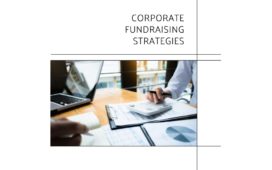2009 was an interesting year, to say the least. The aftermath of the 2008 financial crisis still lingered, and the world economy was in a state of upheaval. Yet, amidst this turmoil, a number of ambitious companies dared to step onto the public stage through an Initial Public Offering (IPO). In this comprehensive article, we explore the companies that made this bold move, the reasons behind their decision, and the aftermath of their choices.
The Global Economic Backdrop
Before diving deep into the specifics, it’s crucial to understand the global economic landscape of 2009. The world was coming to terms with the economic meltdown that had occurred in 2008. Financial institutions had collapsed, property markets crashed, and there was general skepticism towards investments. However, as it often happens in economics, what goes down must come up. With interest rates at record lows, and governments pumping money into economies, the stage was set for a slow yet eventual recovery.
Brave New Entrants
In such a volatile environment, IPOs were considered a risky move. Still, there were companies which decided to forge ahead. Let’s dive deep into some of these companies:
- Mead Johnson Nutrition: A spin-off from Bristol Myers Squibb, this infant nutrition company was one of the first to make its IPO debut in 2009. With strong brand value and a focus on baby nutrition, it managed to raise over $720 million.
- Changyou.com: As a testament to the growing strength of the Asian markets, Changyou, a Chinese online game developer, raised around $120 million, indicating strong investor confidence in tech-based companies.
- Bridgepoint Education: Amidst growing interest in online education, Bridgepoint went public and generated substantial interest.
A Mixed Bag: Performance Post-IPO
The performance of companies post-IPO in 2009 was a mixed bag:
- Mead Johnson Nutrition saw significant growth over the years, proving the resilience and potential of the nutrition industry.
- Changyou.com capitalized on the rising popularity of online gaming but faced stiff competition from other tech giants.
- Bridgepoint Education encountered regulatory hurdles and faced skepticism over its business model.
Factors That Influenced IPO Decisions
Several factors influenced the decisions of companies to go public in 2009:
- Market Timing: With stock prices low, companies believed it was a suitable time to enter and grow as the market recovered.
- Strategic Moves: For some, like Mead Johnson, IPOs were a result of strategic business decisions.
- Rise of Asian Markets: Companies from Asian markets, particularly China, recognized the immense growth potential and sought capital for expansion.
The Larger Takeaway
2009 taught the business world an important lesson: Opportunities often come disguised as challenges. The companies that went public that year exemplified resilience, foresight, and ambition. They remind us that even in the face of adversity, growth and evolution are possible.
Frequently Asked Questions
1. What is an IPO?
An Initial Public Offering (IPO) refers to the process by which a private company goes public by offering its shares to the general public for the first time.
2. Why was 2009 considered a challenging year for IPOs?
The 2008 financial crisis had created an environment of economic uncertainty and skepticism, making 2009 a risky year for IPOs.
3. Which sectors saw the most IPOs in 2009?
The tech sector, nutrition industry, and online education platforms were some of the sectors that braved the IPO route in 2009.
Conclusion
2009 was not just a year of economic recovery but also of opportunities. The companies that ventured into the IPO landscape showcased a blend of strategic thinking, resilience, and optimism. While the journey post-IPO was varied, their decision to go public in such trying times speaks volumes about their vision and commitment.








